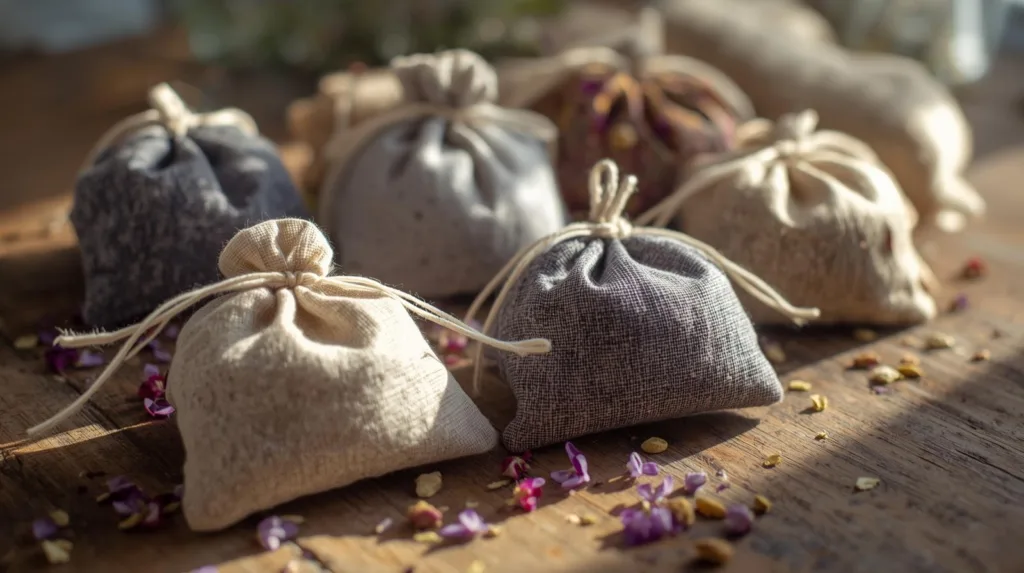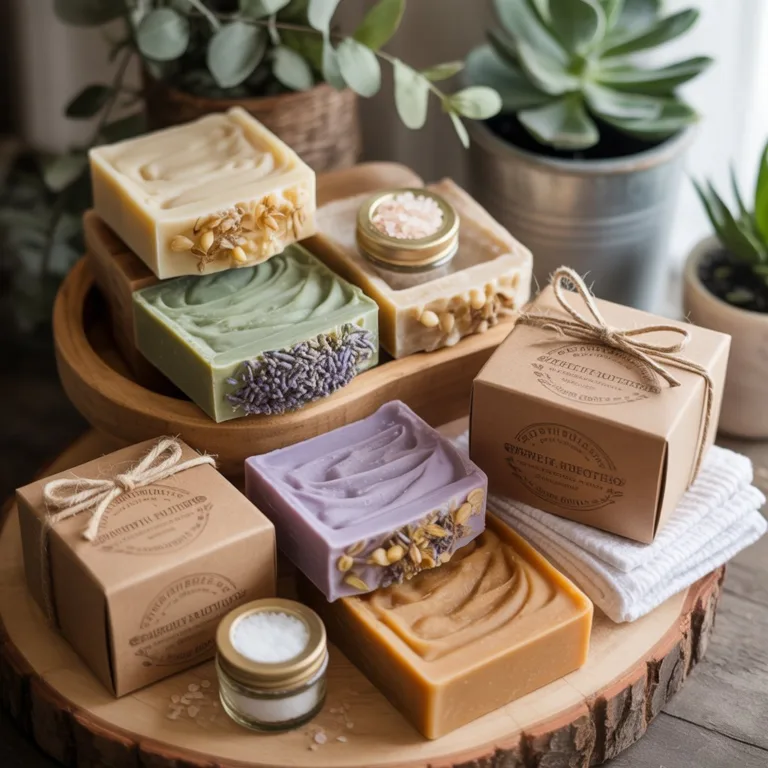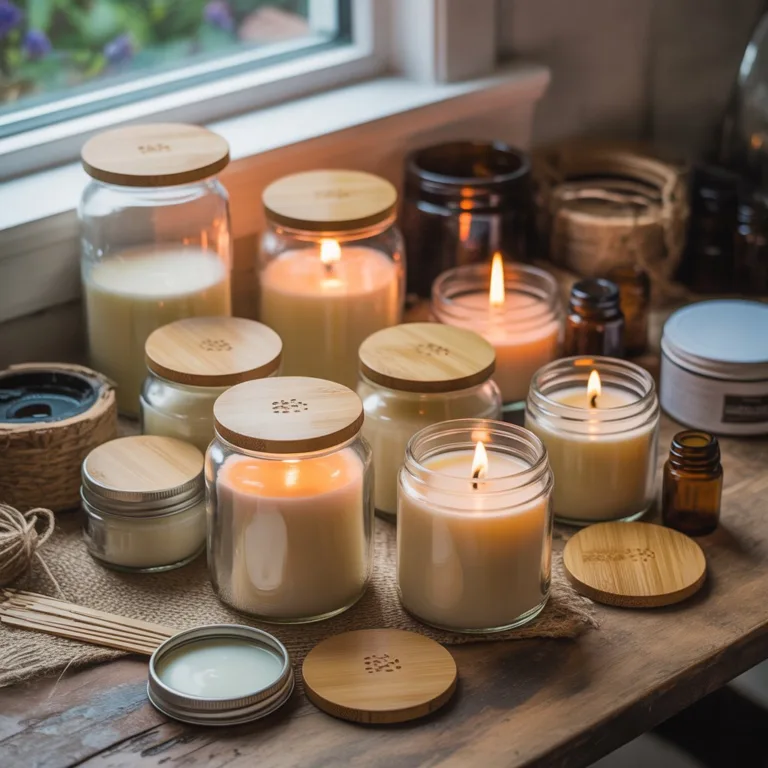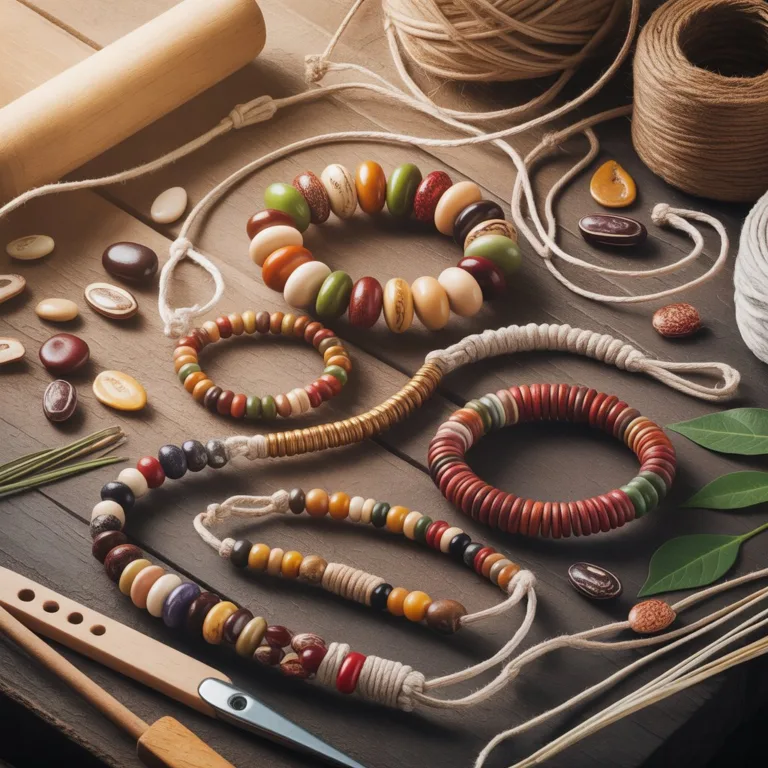There’s something timeless and comforting about the gentle scent of herbs tucked away in a drawer or closet. Homemade herbal sachets combine practicality with creativity, offering a simple way to keep clothes smelling fresh, deter insects naturally, and add a personal touch to everyday spaces. Beyond their aromatic charm, these sachets make thoughtful eco-friendly gifts — handcrafted with care, sustainable ingredients, and zero waste.

Making your own herbal sachets at home is more than a craft; it’s an experience that reconnects you with nature’s fragrances and your creative instincts. You’ll learn to blend dried herbs, essential oils, and natural fabrics to design sachets that look beautiful and serve a real purpose — all while avoiding synthetic fragrances and unnecessary packaging.
This article will guide you through everything you need to know about homemade herbal sachets — from choosing herbs to designing sustainable packaging, creating blends for different moods, and even turning them into unique handmade gifts.
Why Make Homemade Herbal Sachets
Homemade herbal sachets have been cherished for centuries, often passed down as traditions across cultures. They were used not only for their pleasant scent but also for their practical and therapeutic benefits.
Natural freshness: Unlike artificial air fresheners or scented candles, herbal sachets release subtle, authentic aromas. Dried lavender, rose petals, and mint leaves emit gentle scents that last for months without the need for synthetic chemicals.
Eco-friendly alternative: Creating your own sachets helps reduce waste, especially when using recycled fabrics and locally grown herbs. Every sachet you make saves one more plastic-based air freshener from entering the landfill.
Customizable blends: You can craft sachets to match your preferences or needs — calming lavender for sleep, refreshing mint for drawers, or cozy cinnamon and clove blends for winter months.
Mindful gifting: Giving a handmade herbal sachet shows thoughtfulness and care. They’re personal, low-cost, and environmentally responsible — perfect for birthdays, holidays, or wedding favors.
Choosing the Right Herbs for Your Sachets
The heart of any herbal sachet lies in its fragrance blend. The herbs you choose determine not only the scent but also the mood it evokes. Below are some popular herbs and their traditional uses.
Lavender – The Classic Choice
Lavender remains the favorite herb for sachets thanks to its soothing aroma and long-lasting fragrance. Known for promoting relaxation and better sleep, it’s ideal for placing in linen drawers or under pillows.
Rose Petals – Gentle and Romantic
Dried rose petals bring a delicate floral fragrance that pairs well with lavender or chamomile. Use them in sachets meant for closets or as romantic gifts.
Chamomile – Calming and Comforting
Chamomile provides a warm, honey-like scent that encourages tranquility. It’s perfect for bedtime sachets or stress-relief blends.
Lemon Balm and Mint – Fresh and Energizing
These herbs offer crisp, clean aromas that help repel insects while keeping drawers smelling cool and fresh. They’re ideal for bathroom or kitchen storage spaces.
Rosemary and Thyme – Earthy and Herbal
Herbs like rosemary and thyme bring an invigorating garden aroma. They blend beautifully with citrus peels or bay leaves for more robust sachets.
Cinnamon, Clove, and Orange Peel – Cozy and Seasonal
For colder months, spice-based sachets infuse warmth into the air. Combine them for a natural holiday scent that feels comforting and nostalgic.
You can experiment with combinations — lavender and mint for freshness, or rose and chamomile for a floral calm. Creating your signature blend is part of the joy of this craft.
Sustainable Materials for Eco-Friendly Sachets
True sustainability means considering every part of your project — from the herbs to the fabric and packaging.
Fabric options:
- Cotton or linen: Breathable and natural, allowing fragrance to diffuse effectively.
- Muslin: A classic choice for herbal sachets, often used for its rustic look.
- Recycled fabric: Old pillowcases, shirts, or cloth napkins can easily be repurposed into sachet pouches.
- Burlap or hemp cloth: Perfect for rustic or garden-style gifts.
Thread and ties:
Use biodegradable cotton thread for sewing and natural jute twine or ribbon for decoration. Avoid synthetic elastic or plastic fasteners that can’t decompose.
Filling support:
Some people mix herbs with rice, flaxseed, or dried lavender stems to add volume and help the scent disperse evenly. If you use essential oils, the grains will help absorb and retain the fragrance.
By making mindful material choices, your homemade sachets will remain consistent with your eco-conscious values — reusable, compostable, and sustainable.
Creating the Perfect Herbal Blend
Blending herbs is both an art and a sensory experience. The goal is to balance strong and light notes, ensuring the scent feels pleasant and natural rather than overpowering.
Basic structure of a blend:
- Base notes: These are heavier scents that linger (lavender, rosemary, clove).
- Middle notes: Balanced aromas that form the heart of the blend (rose petals, chamomile, thyme).
- Top notes: Lighter, refreshing accents that fade faster but brighten the blend (mint, lemon balm, citrus peel).
Example blends:
1. Calming Sleep Blend
- Lavender (2 parts)
- Chamomile (1 part)
- Rose petals (1 part)
2. Fresh Closet Blend
- Dried mint (2 parts)
- Lemon balm (1 part)
- Rosemary (1 part)
3. Holiday Comfort Blend
- Cinnamon sticks (broken pieces)
- Clove buds
- Orange peel (dried)
- A touch of nutmeg powder
You can enhance any blend with a few drops of essential oils, but this is optional. If used, let the herbs sit for a few hours after adding the oil to ensure even absorption.
Assembling Your Herbal Sachets
Once you have your blend and materials ready, it’s time to assemble. Cut small fabric squares or rectangles (around 10×10 cm or 4×4 inches) for each sachet.
Place a few tablespoons of your herb mixture in the center of each piece of fabric. Gather the edges and tie them securely with jute string or ribbon, or sew them into small pouches if you prefer a more polished look.
Alternative no-sew method:
If sewing isn’t your thing, simply tie your sachets with ribbon or place the herbs inside small drawstring bags made of muslin or organza. These bags can be reused indefinitely, aligning perfectly with sustainable living principles.
Creative touches:
Add decorative buttons, small fabric flowers, or hand-stitched initials to personalize each sachet — especially if giving them as gifts.
Storage and Scent Longevity
To keep your sachets smelling their best, store them in airtight jars or containers until you’re ready to use or gift them.
Tips for longer-lasting aroma:
- Keep sachets out of direct sunlight.
- Gently squeeze them every few weeks to release more fragrance.
- If the scent fades over time, refresh with a few drops of matching essential oil.
- Rotate your sachets seasonally — fresh herbs can be dried each summer for new blends.
Properly stored, a sachet’s aroma can last between six months and a year.
Creative Gift Ideas Using Herbal Sachets
Homemade herbal sachets make beautiful gifts that express care and thoughtfulness. They’re ideal for many occasions, from simple gestures to meaningful celebrations.
Gift set ideas:
- Spa-themed basket: Pair sachets with handmade soap, bath salts, and a beeswax candle.
- Wedding or baby shower favors: Use neutral-colored fabrics and tag each sachet with a handwritten note.
- Holiday gifts: Fill sachets with cinnamon, cloves, and orange peel, then tie them with red ribbon for a festive touch.
- Gardener’s bundle: Combine herbal sachets with seed packets and gardening gloves in a reusable basket.
Adding a small note explaining the herbs and their benefits adds an educational and personal element to your gifts.
Using Herbal Sachets Around the Home
Sachets aren’t just for drawers — they can freshen and beautify multiple spaces around your home.
Where to use them:
- Closets and drawers: Keeps clothes and linens smelling clean and pleasant.
- Luggage: Place a sachet inside suitcases or travel bags for a touch of freshness.
- Bathrooms: Hang sachets near shelves or towel racks for a spa-like atmosphere.
- Pillows: Slip lavender or chamomile sachets inside pillowcases for restful sleep.
- Cars: Use mint or citrus blends to create a natural, chemical-free car air freshener.
Small sachets also fit easily into shoes, gym bags, or storage boxes, keeping odors at bay naturally.
Educational Value and Mindfulness in Crafting
Crafting homemade herbal sachets offers more than a pleasant scent — it’s a mindful, educational process. Children and adults alike can learn about plant properties, sustainable materials, and creative reuse.
It encourages mindfulness through:
- Sensory engagement: The tactile act of mixing herbs, feeling textures, and inhaling aromas promotes relaxation.
- Connection to nature: Understanding how herbs grow, dry, and preserve reinforces appreciation for natural resources.
- Sustainability awareness: Each sachet becomes a reminder of small, meaningful actions toward a greener lifestyle.
This simple craft can be part of a classroom eco-project, a wellness workshop, or a family weekend activity — blending education, creativity, and sustainability into one rewarding experience.
Variations and Seasonal Inspiration
Herbal sachets can adapt beautifully to different seasons or themes, keeping your projects fresh year-round.
Spring: Bright, floral blends with lavender, jasmine, and citrus peel.
Summer: Fresh mint, lemon balm, and lemongrass combinations.
Autumn: Earthy tones using cinnamon, clove, and dried orange slices.
Winter: Warming spice blends mixed with evergreen needles and nutmeg.
Experimenting with seasonal herbs helps you stay connected to nature’s cycles while keeping your home smelling wonderful all year long.
A Thoughtful Touch of Sustainability
Crafting your own herbal sachets embodies the principles of sustainable living — creativity, reusability, and mindfulness. Each handmade sachet is proof that beautiful things can come from simple, natural ingredients and a bit of imagination.
They carry stories — of the hands that made them, the gardens that grew the herbs, and the intention to live more gently on the earth. Whether used for personal enjoyment or shared as gifts, homemade herbal sachets are small tokens of a larger philosophy: that nature provides all we need to live beautifully and responsibly.
So gather your favorite herbs, some scrap fabric, and your sense of creativity. Transform ordinary materials into fragrant treasures that brighten spaces, calm minds, and spread the gentle message of sustainability one scent at a time.

Lucas Hartman is a DIY enthusiast and sustainability advocate focused on natural crafts and eco-friendly home décor. With a background in arts and design, Lucas creates tutorials that help families and hobbyists transform everyday recycled or organic materials into beautiful, functional projects.



